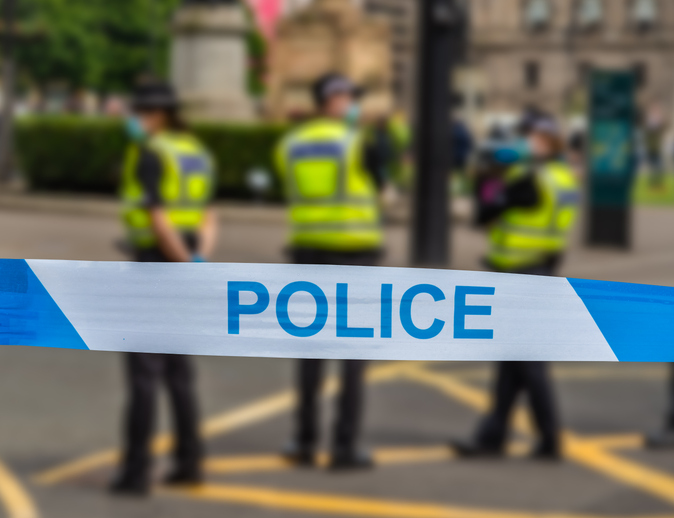On 23 September last year at 6.30 p.m. in the evening in a street in Woolwich, London, Daejaun Campbell cried out, ‘I’m 15, don’t let me die’ as he bled out on a pavement after being stabbed. You probably won’t remember Deajaun but he was a one of nine children murdered by knives in London last year. He was a young black man in a city where victims and perpetrators often share the same ethnicity. An investigation by the Times has revealed that over half the 576 black people murdered by knives between 2013 and 2023 were aged between 16 and 24. London bucks a national trend that reports knife crime in line with demographics – predominantly committed by white people aged in their 30s. In our capital the majority of offenders sentenced for knife offences are aged 18-20. Over half of them were black.
We can’t rely on politicians to have a strategic grip on crime prevention of this sort
State officials often reacts with squirming obfuscation when confronted with data which suggests we have a problem with black teenagers murdering each other at rates out of proportion with their community representation. We’ve seen such hand wringing at play in relation to the racialised sexual torture of predominantly white children by men of predominantly Pakistani heritage in towns across northern England and the Midlands. I wonder if the bereaved parents of those kids slain by zombie knives in places where they should have been growing up – not vainly clinging to life – share this discomfort. I’d say not. ‘Less stop and search,’ as no father or mother looking at a casket where their child should be ever said.
The Mayor of London Sadiq Khan seems incapable of saying anything useful about this horror, regurgitating in City Hall jargon that we should be ‘investing in our young people, our communities and our country so that we can expand opportunity for all.’ Instead it has fallen to the Metropolitan Police commissioner Mark Rowley to sound the alarm on his behalf.
Rowley yesterday responded to the Times‘s investigation. In an interview about the shocking statistics it revealed, Commissioner Rowley said that officers were increasingly coming back to police stations covered in blood from ‘trying to stop a teenager bleeding out’. He fears that crimes such as that which put Daejaun Campbell in the morgue before he was legally able to smoke are becoming normalised. We are certainly becoming more numb to it.
The Met commissioner and other chief constables where this ghastly phenomenon seems entrenched will need more than warm words to move the dial on knife crime. The new Labour government’s response is to pledge to ‘halve knife crime over the next decade.’
This pledge smacks of the weary default used by politicians already out of ideas on criminal justice: more laws. While making a ban on the sort of zombie knife that cut poor Dejean down in the street sounds powerfully suggestive of action, who seriously thinks this will deter mere children from inflicting savage and extreme violence on each other, often over the most trivial of incidents? How will this stop the arms race the anti-knife charity Kinsella Trust has identified where teens terrified for their safety tool up after breakfast, making it all the more likely a knife will be used?
Rowley is correct that any action that will make a dent in the body count requires multi-agency action. He wants London’s myriad statutory agencies and NGOs to ‘get around a table’ to stop the killings. It also means combatting activist discourse that invariably sees powers of police enforcement as a proxy for state oppression. The argument about race discrimination in stop and search, for example, always ignores the crime profile and availability of people in a particular area. Frisking white pensioners is probably not the way to stop kids murdering each other in Woolwich or anywhere else. Destroying the model that makes perpetrators believe carrying a knife is a high status/low risk activity is more important than the sensibilities of middle class progressives.
The sad truth is that as things stand, we can’t rely on politicians to have a strategic grip on crime prevention of this sort. The multi-agency approach to stopping kids being drawn into crime has been on the statute books since 1998 alongside local authority youth offending teams. These teams, too, have gradually been defunded, reduced in status and subsumed into wider youth work. Where they worked well they were transformative, getting close to kids going off the rails early on and putting them back on track.
The best approach seen to tackling violent crime so far started in Strathclyde. Its much vaunted ‘public health’ approach to crime was embraced and witlessly parroted by politicians including London’s mayor without any understanding that it was predicated on tough enforcement. Its message of ‘we will help you to change but if you don’t want to, we will make life impossible for you’ seemed lost on many of its so-called champions.
It’s time for gloves off on knife crime. The police can’t do it all and in any case they are distracted and demoralised. But they are the instrument of change likely to work the fastest on making London a safe place for young people to grow up. Across the rest of the country there are places that are even more blighted by knives than London. Many of them are areas of high deprivation where the demographics of criminals irrelevant. But in London the greatest racism of all is to let more black children die alone in the street in the cause of political cowardice.








Comments